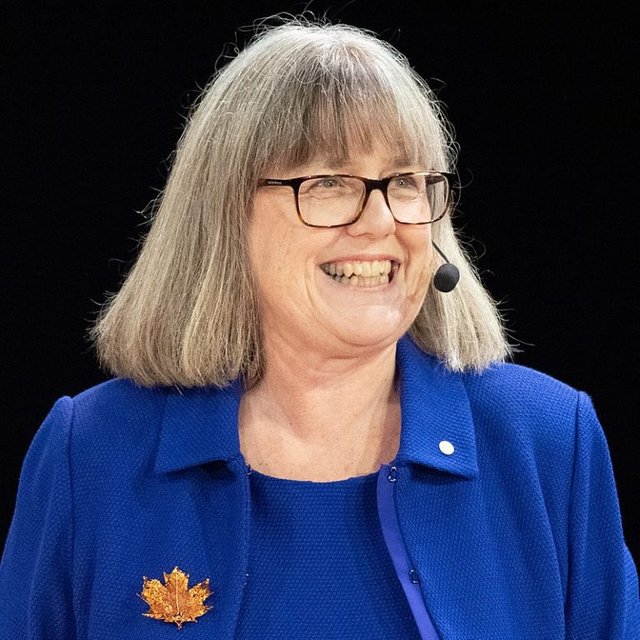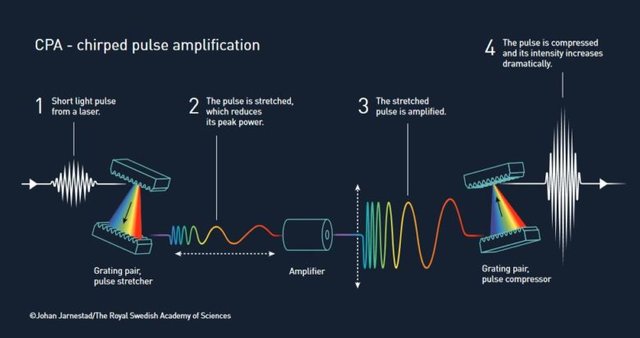Donna Strickland, the first Nobel Prize in Physics of the 21st century
It is very likely that the term "frequency-gliding laser" sounds like a Chinese to most people who start reading this article. However, we are talking about a revolutionary technique that is much closer to our lives than we think: have you operated or know someone who has had an eye operation? Well, it turns out that the CPA is the basis of the high intensity lasers that are used worldwide today for eye surgery operations. We go back to 1985: Donna Strickland, a young doctoral student at the University of Rochester, published with his thesis director Gérard Mourou an article describing a technique called Chirped Pulse Amplification (CPA) by which he would receive, more than thirty years later, the prestigious Nobel Prize in Physics. Strickland was to become the first woman of the 21st century to receive the award in this category and the third in the history of the Nobel Prizes, behind Marie Curie in 1903 and Maria Goeppert-Mayer in 1963. "Curie and Maria Goeppert-Mayer were pioneers who worked as physicists at a time when women scientists could not even access paid positions, "explained the Canadian physicist in a telephone interview with the Royal Swedish Academy on the occasion of the award received in 2018. However, the researcher never set a goal to achieve this award so inaccessible for those of her gender: "I did it for fun," he explains, "it was fun and that's why I spent many hours working on it."

** What is the CPA technology? **
The Royal Swedish Academy decided to award half of the 2018 Nobel Prize in Physics to Strickland and Mourou because their method "allows ultra-short, high-intensity optical pulses to be generated without destroying the amplifier material."

What does this mean? Although the laser was invented in 1960, in the 80s the great challenge was to increase its power without destroying it. "If you amplify a laser too much in a crystal, there comes a time when the amplified crystal is destroyed," explains Luis Roso, professor of optics at the University of Salamanca and director of the Center for Pulsed Lasers (CLPU). Roso worked at the University of Rochester at the time when Strickland and Mourou devised the CPA technology and, in fact, the powerful VEGA laser that houses the CLPU is the heir of this technique.
"What we already knew before Strickland and Mourou was that, in order to avoid the destruction of the crystal, it was necessary to open the beam, and this was done in a transverse direction (widthwise). For this, a huge crystal was needed: we talked about teravatio lasers, which were very large and complicated, "the researcher explains. "The idea they had was to open the beam in the longitudinal direction (lengthwise), instead of transverse. For this purpose, a pulsed short pulse or broadband laser is used. In summary: what the CPA technology does is to stretch the beam in time, not in space ". [two]
SOURCES:
[1] https://en.wikipedia.org/wiki/Donna_Strickland#/media/File:Donna_Strickland_EM1B5760_(46183560632)_(cropped).jpg
[2] https://mujeresconciencia.com/2019/01/16/donna-strickland-la-primera-nobel-de-fisica-del-siglo-xxi/
Congratulations @and2300! You have completed the following achievement on the Steem blockchain and have been rewarded with new badge(s) :
You can view your badges on your Steem Board and compare to others on the Steem Ranking
If you no longer want to receive notifications, reply to this comment with the word
STOPVote for @Steemitboard as a witness to get one more award and increased upvotes!